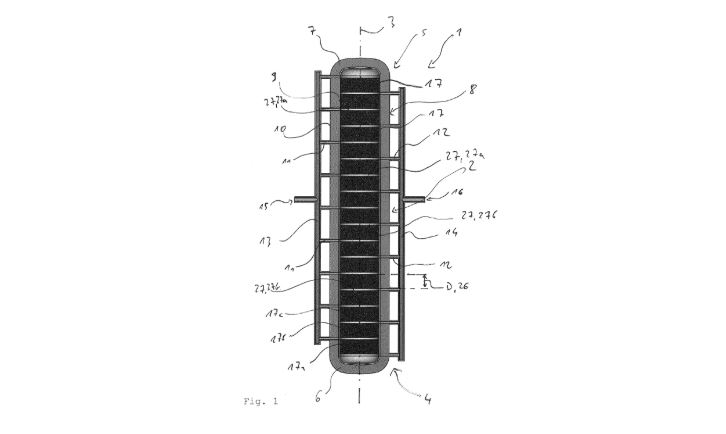To meet the growing demand for efficient and safe hydrogen storage, a team of inventors from Helmut Schmidt University has devised an innovative pressure vessel designed specifically for this purpose.
This patent outlines a sophisticated approach to storing or compressing hydrogen, with the potential to enhance the efficiency and functionality of hydrogen-based systems significantly. Below, we explore the key elements of this patent and its potential impact on the hydrogen economy.
At the heart of this invention is a pressure vessel featuring a cylindrical structure with a longitudinal axis. The cylindrical portion is sealed with a first and second cap at either end, creating a robust housing. This housing comprises both an inner and outer wall, ensuring the integrity and safety of the stored hydrogen. Additionally, the design includes a critical feature: at least one inlet and outlet tube for the seamless transfer of hydrogen into and out of the vessel. These elements, strategically located on the cylindrical portion, play a pivotal role in the vessel’s operation.
A distinctive attribute of this patent is the incorporation of multiple metal hydride beds within the vessel. Each bed, positioned transversely to the longitudinal axis, contains a specific metal hydride capable of absorbing and desorbing hydrogen gas. The uniqueness of the metal hydride beds lies in their parallel arrangement, with gaps in between to form flow channels. These channels, vital for the operation, allow for the free movement of hydrogen, fostering improved efficiency.
To optimize hydrogen flow, the pressure vessel employs a calculated configuration of alternating inlet and outlet channels along the longitudinal axis. This alternating pattern ensures that adjacent metal hydride beds can share channels, creating a streamlined process for hydrogen absorption and desorption. The flow channels are arranged to guarantee that the first and second metal hydride beds share an inlet channel, while the second and third share an outlet channel. This design enhances the efficiency of hydrogen processing, leading to potential improvements in the speed and energy consumption of hydrogen-based systems.
This innovative pressure vessel concept holds promise for diverse applications in the hydrogen economy. By improving the storage and compression of hydrogen, it could be employed in various sectors, including transportation, power generation, and industrial processes. The metal hydride bed configuration offers a more compact and efficient solution, potentially lowering costs and increasing the viability of hydrogen as a clean energy source. Although the patent primarily provides a technical solution, its implications for the broader adoption of hydrogen are substantial.
Stay updated on the latest in energy! Follow us on LinkedIn, Facebook, and X for real-time news and insights. Don’t miss out on exclusive interviews and webinars—subscribe to our YouTube channel today! Join our community and be part of the conversation shaping the future of energy.





